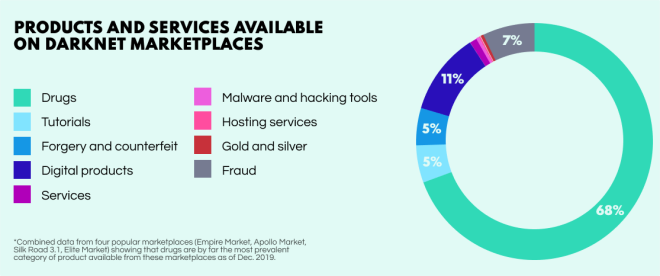How open source intelligence reveals the hidden dangers of the dark web?
The dark web is an absolutely vital source for generating high-quality intelligence
that can be used for a variety of critical purposes. However, it is also a source
that is often overlooked by intelligence and security services.
While
anonymity is vaguely visible in these obscure online areas, cracks will eventually
appear in almost any system. In this environment, open source intelligence solutions
stand out as important tools for revealing the hidden dangers of the dark web,
transforming investigations in different areas from law enforcement to enterprise
security. Here are some examples.
1. Combating illicit
trade
As the most important platform for conducting illegal
trade, dark web marketplaces are obviously the online areas where investigators need
to look for various contraband vendors. However, as criminals carefully hide their
activities behind layers of anonymization methods, open source intelligence tools
are beginning to be employed to overcome dark web barriers.
While PGP
encryption is very reliable, humans are certainly not. All it takes is a small
misstep and a strong castle of anonymity is gone. The advanced automated search
methods of open source intelligence solutions are not only able to find such cracks
in the encryption armor; they can also perform extensive searches to link dark web
activity to accounts on the Surface Web and identify users.
The
de-anonymization of Silk Road, the infamous dark web drug market, is a good example
of the effectiveness of such techniques. After finding links between PGP keys, email
addresses and Reddit accounts, investigators turned to the platform to obtain user
information such as log files and IP addresses. The data led to the identity of Silk
Road's chief administrator and the shutdown of the marketplace.

2. Combating data breaches
Leaked corporate and government
data is a valuable commodity that is widely circulated on the dark web. According to
CSO Spotlight, 60 percent of dark web content is potentially harmful to
organizations. This stems from a range of threats, including cyber espionage against
confidential data, critical infrastructure outages caused by cyber attacks, and
botnet-enabled malware or ransomware deployments.
With the ability to
continuously monitor paste sites, discussion boards and marketplaces on the deep and
dark web, open source intelligence tools enable security teams to quickly identify
and contain data breaches, thereby avoiding huge costs. In addition, novel malware
and attack tactics discovered on the Dark Web can continuously inform threat
intelligence to more accurately predict, mitigate and investigate future breaches.
3. Countering Extremism
Extremism, which poses a
significant threat to national security and society at large, is a serious problem
that takes many forms and is often fueled by the dark web. Dangerous radical sects
such as al-Qaeda and domestic far-right extremist groups use the anonymity of the
dark web to spread propaganda, seek financing, recruit new members, procure weapons,
and even plan attacks.
Modern open source intelligence solutions have a
range of capabilities that enable analysts to draw a truly comprehensive picture of
a given group's structure. By combining tracked cryptocurrency routes, inter-domain
account identification, geolocation, and various communications and interactions,
investigators can identify and disassemble dangerous groups while pre-empting and
avoiding potential terrorist acts.
Despite its reputation for anonymity and
secrecy, the Dark Web is not as obscure as it is often believed to be. By leveraging
open source intelligence technologies, analysts and investigators from all sectors
can understand Dark Web activities and participants to gain critical insights,
transform cases, and accelerate workflows.